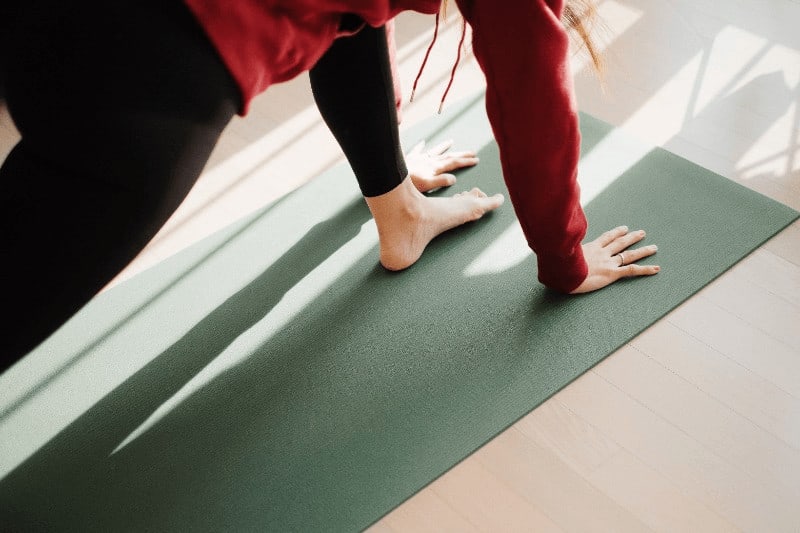Have you ever not too long ago been to your first yoga class and located it extremely troublesome? Or have you ever been attending lessons for some time now however nonetheless need assistance remembering the poses?
Yoga is undoubtedly tougher than it sounds.
There are various components in play relating to executing the poses accurately. Your respiration sample, the kind of yoga you’re practising, and even your yoga mat can all have an effect on your expertise.
However don’t fear in the event you discover yoga stretches just like the bridge backbend difficult or in case your hips resist lengthening; I’m right here to assist.
I’ve been instructing yoga to novices for over 5 years and have discovered from yoga instructing what most individuals do flawed once they first begin out. So, to get probably the most out of your yoga lessons and grasp the alignment of your favourite asanas, observe these 10 suggestions.
1. Begin with beginner-friendly yoga poses
One widespread mistake I see amongst newbie yogis is attempting an excessive amount of too quickly. Many individuals see superior yogis doing fancy asanas like headstand, crow pose, and chaturanga and need to study these postures instantly.
As soon as they understand how difficult these superior postures are, they really feel disheartened, believing they don’t seem to be adequate to do yoga.
Nonetheless, it isn’t a lot to do along with your potential (though lack of flexibility within the hips or shoulders definitely performs an element). However the principle downside is that you just’re approaching studying yoga poses within the flawed method.
It isn’t a good suggestion to start out lifting 20kg in your first weight-lifting session, however you shouldn’t begin with superior yoga postures.
As a substitute, focusing solely on beginner-level asanas will aid you progressively construct the power, stability, and adaptability in your hips, arms, and shoulders wanted for these standing arm balancing poses and inversions.
So, what yoga stretches must you begin with? Mountain pose, Downward Canine, Cat and Cow, and Baby’s Pose are nice beginning factors.
- Mountain Pose: The standing mountain pose teaches you how you can floor down by way of your decrease physique and improves your posture by selling a lengthened backbone.
- Downward Canine: Downward canine offers a pleasant stretch to your entire physique, bettering flexibility within the hamstrings and backbone whereas strengthening the higher again and arms.
- Baby’s pose: Baby’s pose is a superb pose for studying to attach along with your breath. It additionally helps to launch tightness within the hip flexors and backbone, bettering general mobility.
2. Attend Iyengar, Hatha, or Ashtanga Yoga Courses
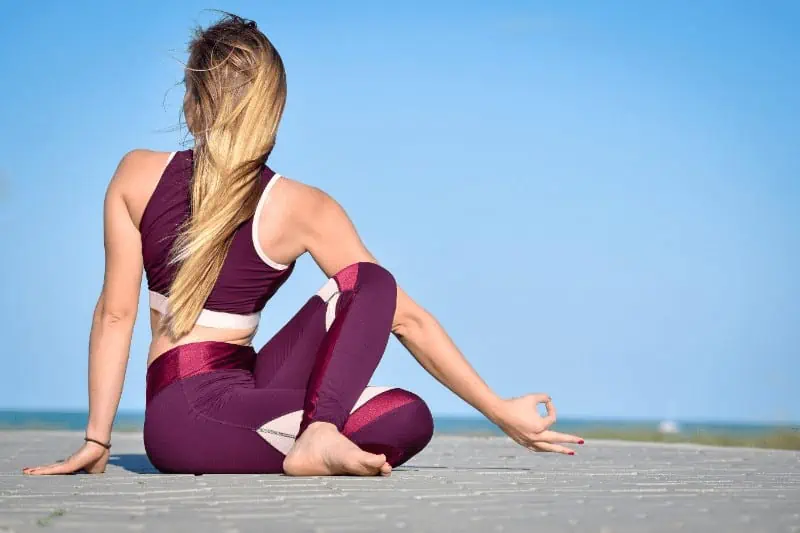
The precise kind of yoga could make a world of distinction. Whereas all yoga types carry fantastic advantages to the thoughts, physique, and soul, I like to recommend a few types to novices – Iyengar and Hatha yoga.
Iyengar Yoga
Iyengar yoga is good for novices because it focuses on precision and alignment. It’s all about getting the posture excellent so that you maintain every place for longer than most different types – usually, 10 breaths or so.
I additionally suggest Iyengar yoga as a result of it encourages using props that will help you discover the proper positioning whereas preserving your physique protected.
This method makes Iyengar yoga nice for individuals recovering from accidents or affected by power again ache and is even appropriate for older adults. A research by the College of California discovered that 12 weeks of standard apply of Iyengar yoga improved stability and mobility within the 54 older adults who took half.
Hatha Yoga
Hatha yoga is a delicate, slow-paced model that promotes physique consciousness and breath connection. You usually maintain a Hatha posture for five+ breaths; like Iyengar, it’s accessible to all. Most Hatha yoga academics will present modifications or options to every pose.
What about Ashtanga Yoga?
When you’re coming from an athletic background, attempt an Ashtanga yoga class. As it is a demanding model, it isn’t appropriate for novices who lack power and stability.
Nonetheless, what I really like about Ashtanga yoga is the construction – in every class, you observe the identical routine, so that you study to grasp the first collection earlier than shifting on to tougher poses.
3. Spend money on a high-quality yoga mat
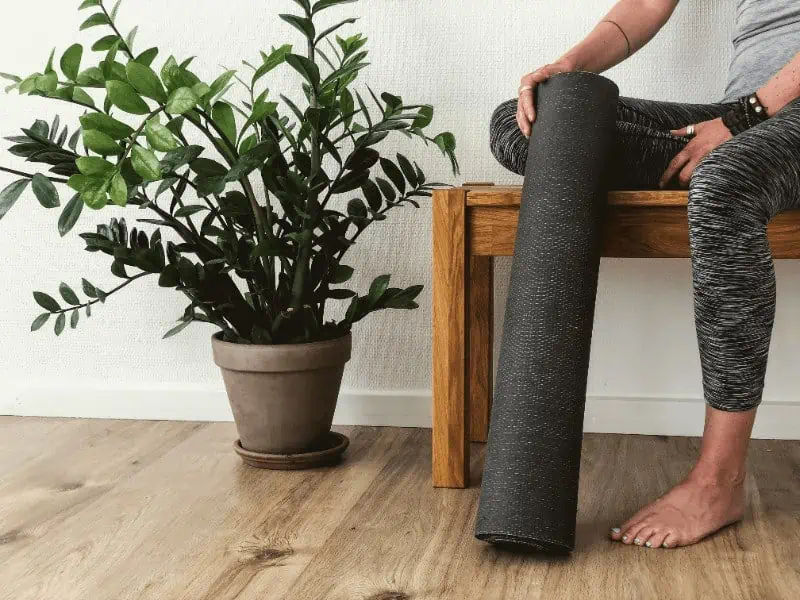
You’ll be able to apply yoga anyplace, anytime, with nothing however a yoga mat required.
Nonetheless, the standard of your yoga mat issues A LOT. An excellent high quality mat is the muse of a helpful and efficient yoga apply.
Like Lululemon’s famend “The Mat,” a very good mat gives grip, stopping your arms from slipping in downward canine and bettering stability in standing postures. Within the lunge pose, it additionally gives consolation and assist on your joints, corresponding to your knees.
Due to this fact, one vital tip I give all my newbie college students is to NOT skimp on this important software. Investing in a high-quality mat is investing in your apply.
Selecting the Proper Mat
So, how do you discover the appropriate mat for you? There are a number of components to contemplate, together with:
- Thickness: A thicker mat provides extra cushioning however could also be more durable to stability on. Thick mats are greatest for restorative and yin yoga, whereas average-thickness (5mm) mats are higher fitted to different types. Be taught extra in regards to the significance of mat thickness on this information!
- Materials: Pure rubber mats supply wonderful grip. Cork is a fab, eco-friendly materials that’s nice at preserving foul odors at bay. Nonetheless, it’s best to keep away from sure supplies, corresponding to PVC, that may comprise poisonous chemical substances. We’ve created a information to non-toxic yoga mats that will help you select the appropriate one.
- Texture: Some yogis want a clean floor like rubber, whereas others like a texture (corresponding to cork) for further grip. That is fully down to private choice.
4. Use props for assist and alignment
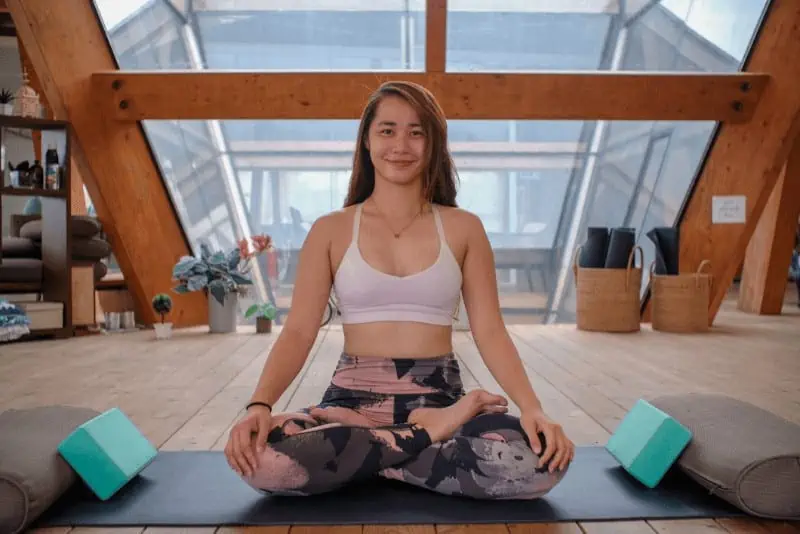
Once you’re studying the yoga poses, props are your greatest good friend, so reasonably than dismissing them, embrace them! Listed here are the props I like to recommend having readily available and the way they might help you.
Yoga Blocks for Higher Steadiness
Have you ever ever tried to do the Triangle Pose however couldn’t attain the bottom? That’s the place yoga blocks come in useful. They aid you preserve stability with out straining your muscle tissue.
You should utilize them beneath your arms, toes, hips, or shoulders. For instance, in a side-angle pose, you possibly can place a dense foam block like this one by lululemon subsequent to your entrance foot to relaxation your hand on.
Or, in pigeon pose, you possibly can place one beneath your hip (filling the house between your physique and the ground) to advertise higher spinal alignment.
Blocks may also encourage muscle engagement. For instance, putting a block between the internal thighs in a bridge pose will aid you maintain your glutes, legs, and again muscle tissue activated.
Take a look at this text for different methods to make use of blocks in yoga poses.
Bolsters for Added Consolation
Bolsters give further cushioning on your hips or knees in seated stretches and assist your again in supine poses.
I prefer to put a bolster on my legs in a seated ahead bend and relaxation my head on it. I additionally typically place one beneath my backbone in a supine butterfly pose to raise my chest and deepen the backbend.
Straps for Prolonged Attain
Straps function an extension of your arms, so in the event you can’t contact your toes in a seated ahead bend, seize a strap! Wrap it round your heel and pull gently to deepen the stretch.
Most yoga straps additionally will let you create a safe loop, which you need to use in a number of methods. For instance, you possibly can place a looped strap round your hips and heels in reclined Baddha Konasana to assist your backbone and knees.
Use of the wall
When you don’t have any props readily available, use the wall as assist as a substitute. The wall might help you study inversions, discover a deeper ahead bend or shoulder stretch, or assist you when your stability is off.
When you get pleasure from doing poses towards the wall, you may also like chair yoga! Take a look at this information on chair yoga poses for novices.
5. Examine yoga books
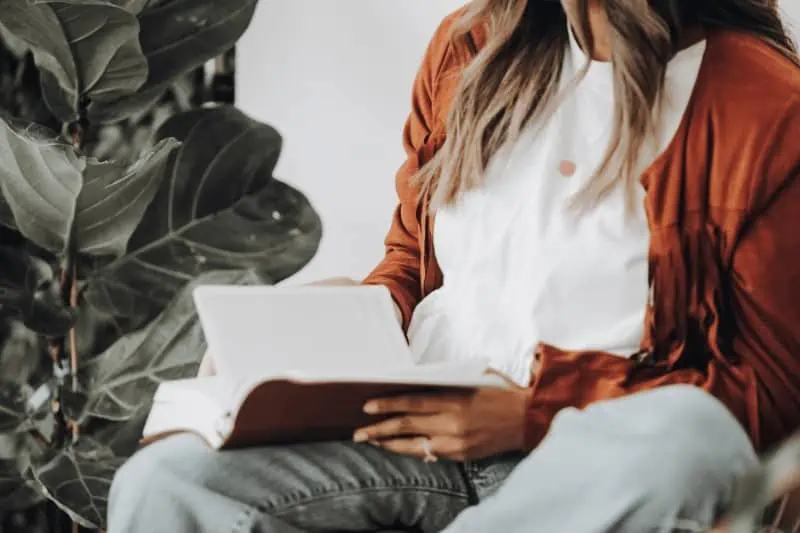
Many informative yoga books concentrate on asana, which may present insights into the advantages and alignment of the commonest yoga poses. They will additionally aid you perceive the anatomy of yoga, studying how you can stretch your again, leg muscle tissue, and outer hips successfully.
Listed here are just a few yoga books I like to recommend trying out:
- Yoga Anatomy by Leslie Kaminoff – That includes full-color anatomical illustrations, this eye-opening guide reveals you precisely what muscle tissue strengthen and stretch in every pose.
- Mild on Yoga by B.Ok.S Iyengar – This famend yoga guide gives detailed descriptions and illustrations of all of the Iyengar yoga poses and respiration workouts.
- 2,100 Asanas by Daniel Lacerda – This “asana bible” offers detailed cues of every pose and beginner-friendly modifications and recommendations on how you can make the pose give you the results you want.
6. Join along with your breath
Studying how you can execute yoga poses accurately isn’t just about what you do along with your physique. Breath management is a HUGE a part of yoga, as by way of our breath, we are able to consciously calm down tight muscle tissue and transfer by way of rigidity to go deeper into the stretch.
Cultivating a sluggish and regular respiration sample throughout your yoga session may also stop fatigue and muscle cramping. Thus, breath connection lets you develop extra higher physique and core power to sort out the extra superior poses.
There are various totally different respiration strategies in yoga, however I like to recommend first mastering diaphragmatic respiration. When you’ve received the grasp of that, you possibly can study the ujjayi breath, which improves the oxygenation of your blood, helps construct inner warmth, and prevents fatigue.
7. Apply persistently
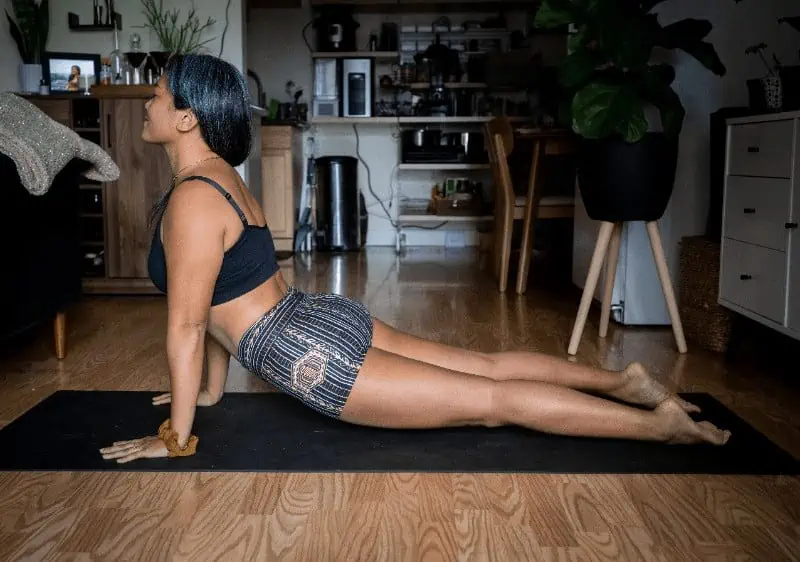
Establishing a constant routine is significant to actually understanding the poses, because it enhances your muscle reminiscence, helps lengthen the time you possibly can maintain poses, and hastens your course of.
To make yoga a behavior, I like to recommend scheduling your classes on the similar time every day. I additionally counsel monitoring your progress by preserving a journal of the poses you apply every day, how they felt in your physique, and any breakthroughs you had.
However bear in mind: each yogi’s journey is exclusive, so don’t examine your self to others or beat your self up in the event you really feel such as you aren’t making progress, which brings me to my final professional tip…
8. Take heed to your physique
Yoga just isn’t about in the event you can contact your toes however about how related you’re to your breath and your physique.
The extra physique consciousness you domesticate, the extra you need to use your physique as a information. By listening to your physique’s cues, you’ll know when to problem your self and when to tug again.
It’s best to really feel a stability between effort and ease in each posture. If a pose feels uncomfortable or causes ache, modify it or select an alternate. By no means keep in a pose in the event you expertise any sharp or stabbing ache.
Closing ideas
Mastering yoga poses takes time, endurance, and constant apply. However there are issues you are able to do to hurry up your progress whereas preserving your physique protected, corresponding to exploring totally different types, studying yoga books, and embracing props.
Nonetheless, bear in mind, yoga is about development, not perfection, so hearken to your physique, join along with your breath, and benefit from the studying course of!
FAQ 1: What are some beginner-friendly yoga poses?
Some beginner-friendly yoga poses embrace Mountain Pose (Tadasana), Downward-Going through Canine (Adho Mukha Svanasana), Baby’s Pose (Balasana), and Warrior I & II (Virabhadrasana I & II).
FAQ 2: Why ought to I put money into a high-quality yoga mat?
A high-quality mat gives higher grip, assist, consolation, and sturdiness. It could possibly make your apply safer by stopping slips and falls.
FAQ 3: How can props improve my yoga apply?
Props like blocks, straps, and bolsters might help with alignment, present assist throughout difficult poses, and deepen stretches.
FAQ 4: Are there particular books for learning yoga?
Sure! Some really useful titles embrace Mild on Yoga by B.Ok.S. Iyengar and The Yoga Bible by Christina Brown.

